Column: Rains push L.A. trash into Ballona Creek. He plucks it out
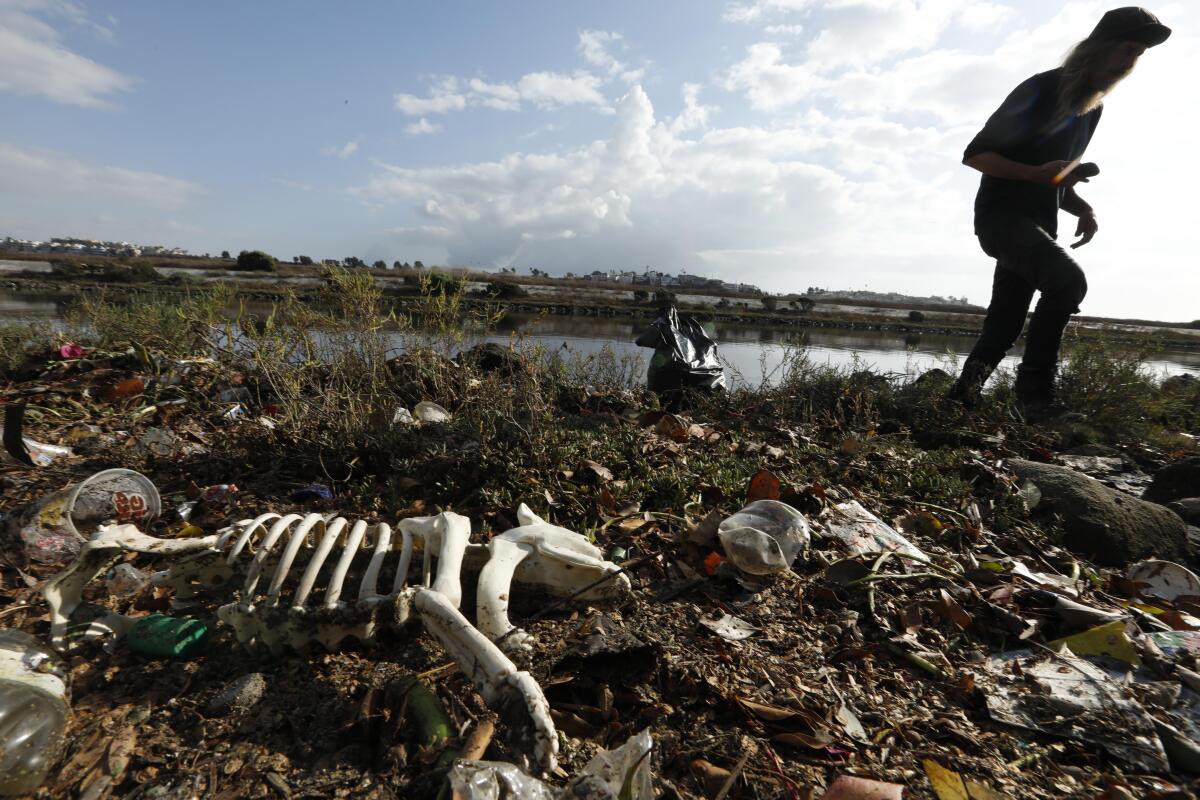
- Share via
“This is gonna blow your mind,” Josey Peters promised, calling me down to the banks of Ballona Creek. “You’ll never be the same.”
I pushed through the bushes, eased down the slippery slope and stepped into the muck of a million pieces of trash. For as far as I could see, east and west, the banks were littered with plastic cups, fast-food containers, spray paint cans and chip wrappers.
It had rained a smidgen the day before, the first wet weather of the season, and this was what had washed downstream from the area west of downtown Los Angeles. Debris floated in the murky water, too, and a lot more, no doubt, had washed out to sea.
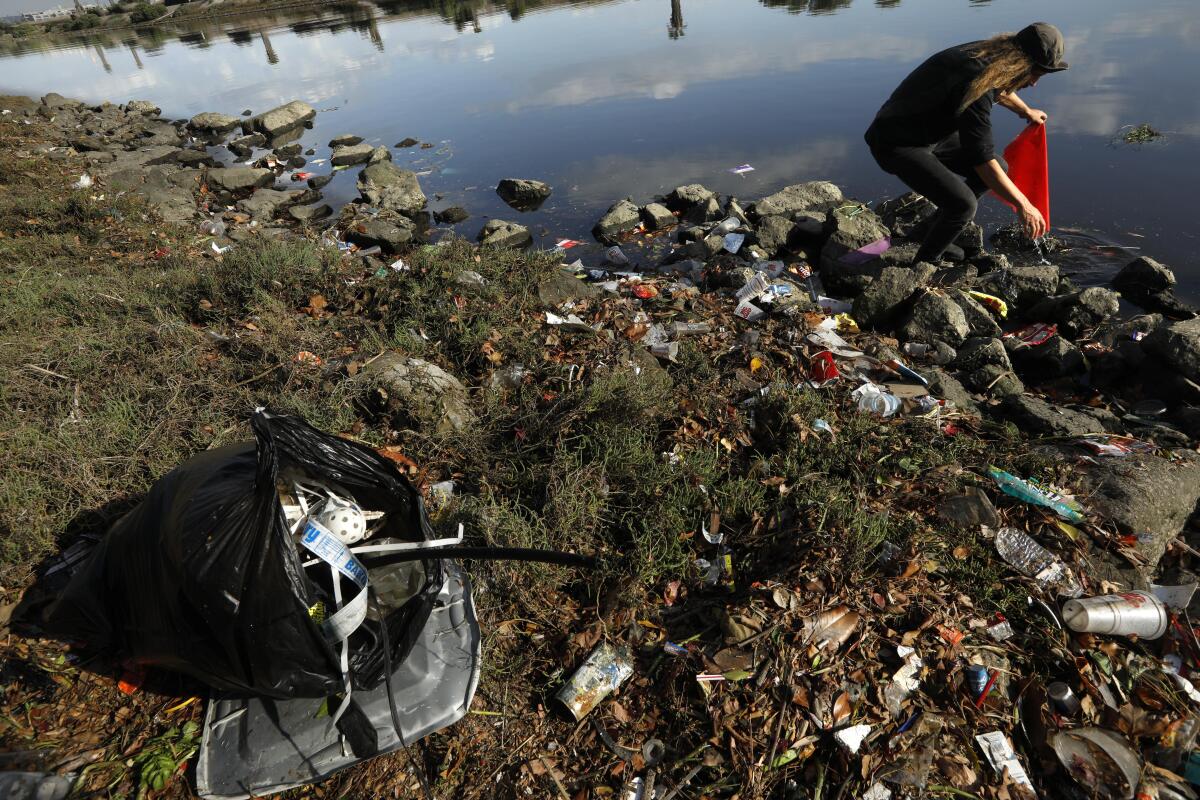
Hideous, shameful, grotesque. These were the words that came to mind. And with a storm expected to batter Los Angeles this week, a lot more of the same will be heading downstream.
Peters, who spends hours every week filling large trash bags on L.A.’s beaches and tributaries, retrieved a piece of furniture from the water’s edge.
“Gotta get that out of here,” he said. “No chairs in the ocean.”
Peters, 54, still looks like the rock ‘n’ roll guitarist he once was. Electrified hair blasts out from under his hat. His boots are black as crows and so is the rest of his clothing, and he sports a soul patch and skinny goatee. He’s had a series of jobs, including most recently with a marijuana dispensary, but his passion is trash.
“I can pick up a thousand straws if I wanted to,” he said as he tossed one into his bag. “Actually, some days I do pick up a thousand straws.”
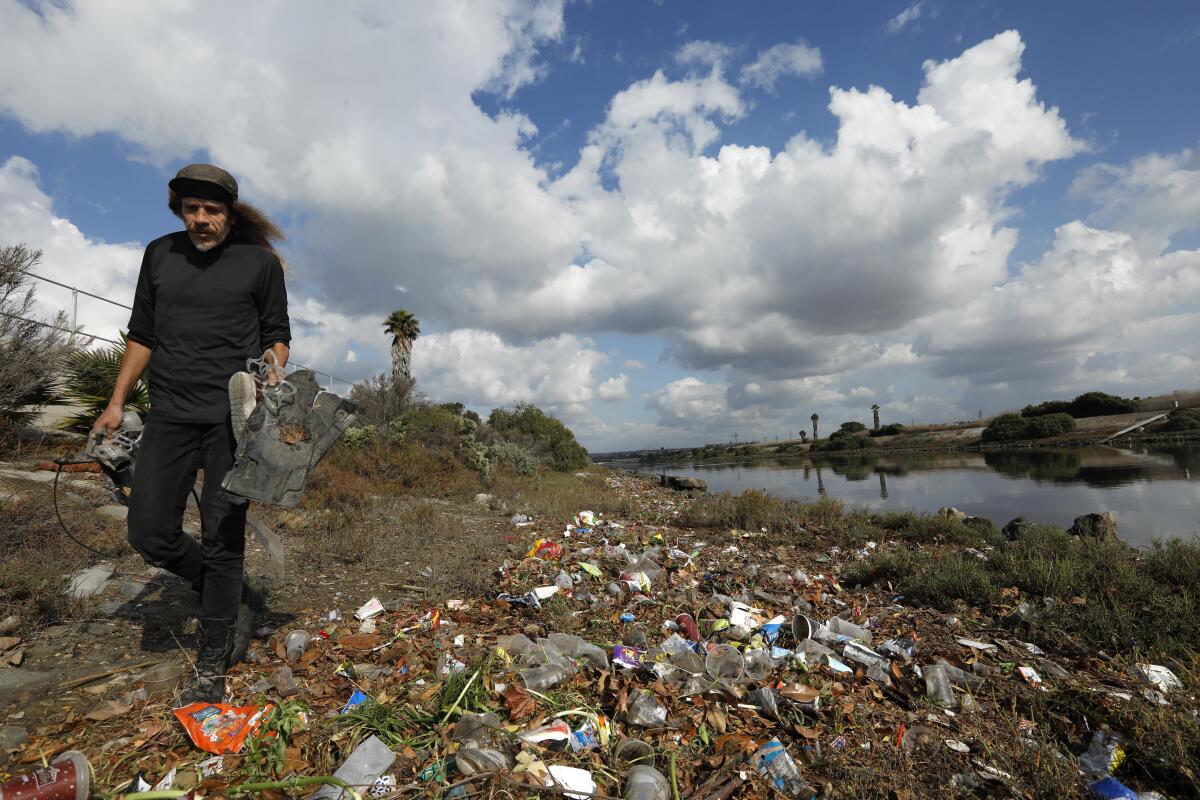
A lot of work has been done in the last two decades to catch trash in storm grates and waterway booms, and L.A. County is partnering with an international nonprofit called Ocean Cleanup to employ a trash-retrieval vessel on the creek.
Voters approved Measure W last year to create a parcel tax that pays for conserving and cleaning stormwater in coming years. But we still live in a throw-away, fast-food society, and a shocking amount of trash is still finding its way into Ballona Creek and the L.A. River. In 2007, I waded through the muck of Compton Creek in waders, taking a look at what washes into the Los Angeles River.
“The best thing we’ve done so far is ban single-use plastic bags,” said Shelley Luce of Heal the Bay. “But we need to take the next step and make a serious commitment to banning single-use clam shells and packaging — all the plastic and potato chip bags … and drink pouches. None of it is recyclable.”
Luce, who lives in Mid-City Los Angeles, said she’d like to see a study of exactly how so much junk ends up in the water. She doubts that the growing number of homeless encampments are a significant factor, and thinks part of the explanation for the mess is obvious.
“At the bus stops all around my neighborhood we have overflowing trash cans. Even if we try, residents of the city are walking around without enough options” for disposing of trash, said Luce, who told me she no longer drinks coffee if she can’t use a ceramic cup and the only option is a disposable container.
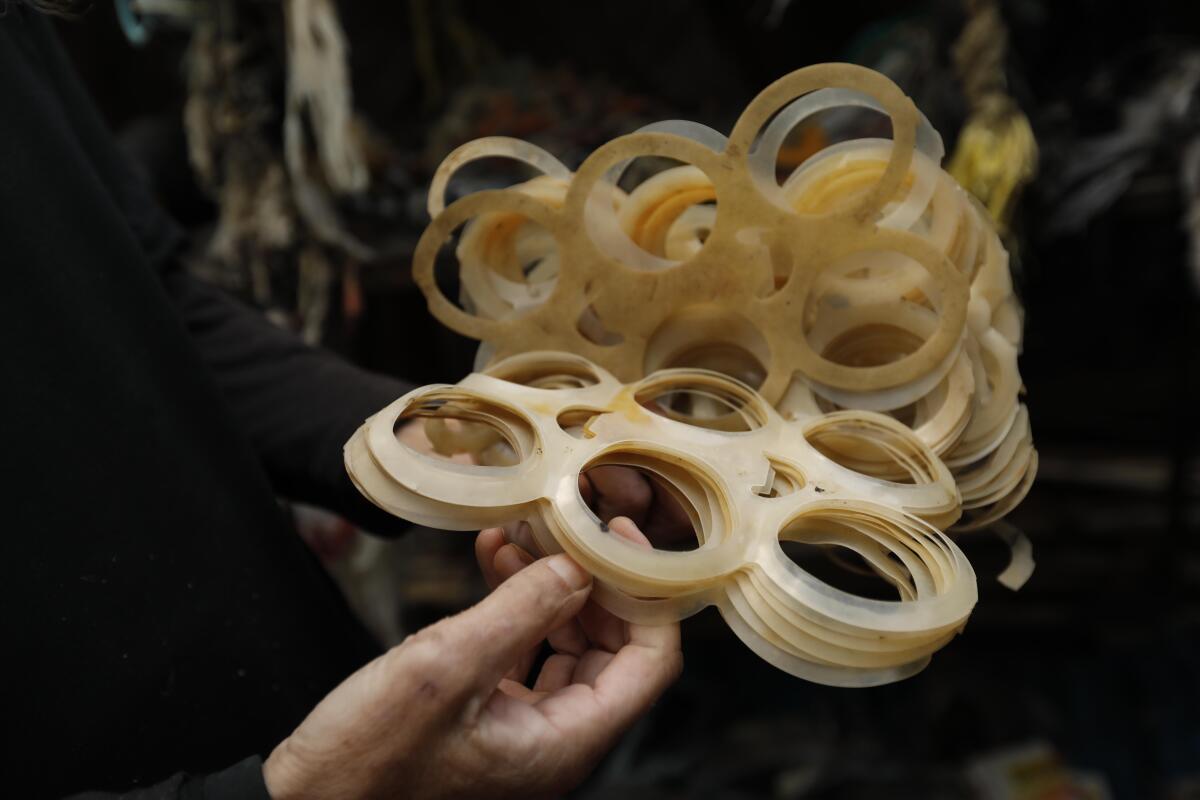
Heal the Bay is about to release a report on the management of storm water, and spokeswoman Talia Walsh said one finding will be that “many local municipalities are not making meaningful progress to reduce stormwater pollution, and information is not readily available to the public, who are directly impacted by polluted waters.”
In March, a motion by L.A. County Supervisor Janice Hahn called for a study of the problem and a plan for solutions. Last month, the report found we have already made significant progress but concluded that “considerable amounts of trash continue to reach downstream beaches and the Pacific Ocean.”
The same day I toured the creek with Peters, about 40 volunteers from the nonprofit Friends of Ballona Wetlands gathered trash. Patrick Tyrrell, director of habitat restoration for the group, said about 200 pounds of trash were collected in just two hours. Tyrrell said anyone who wants to join the effort can get details at ballonafriends.org.
Peters said he prefers to go solo, and that his interest in coastal preservation goes back to his childhood.
“My dad showed me how to pick up trash along Lake Michigan when I was seven,” he said. After his father’s death, he picked up trash with his Boy Scout troop along waterways in Chicago.
“I don’t know why more of us aren’t engaged in this kind of stuff,” Peters said, telling me concern about climate and the environment “are just part of being a normal human being.”
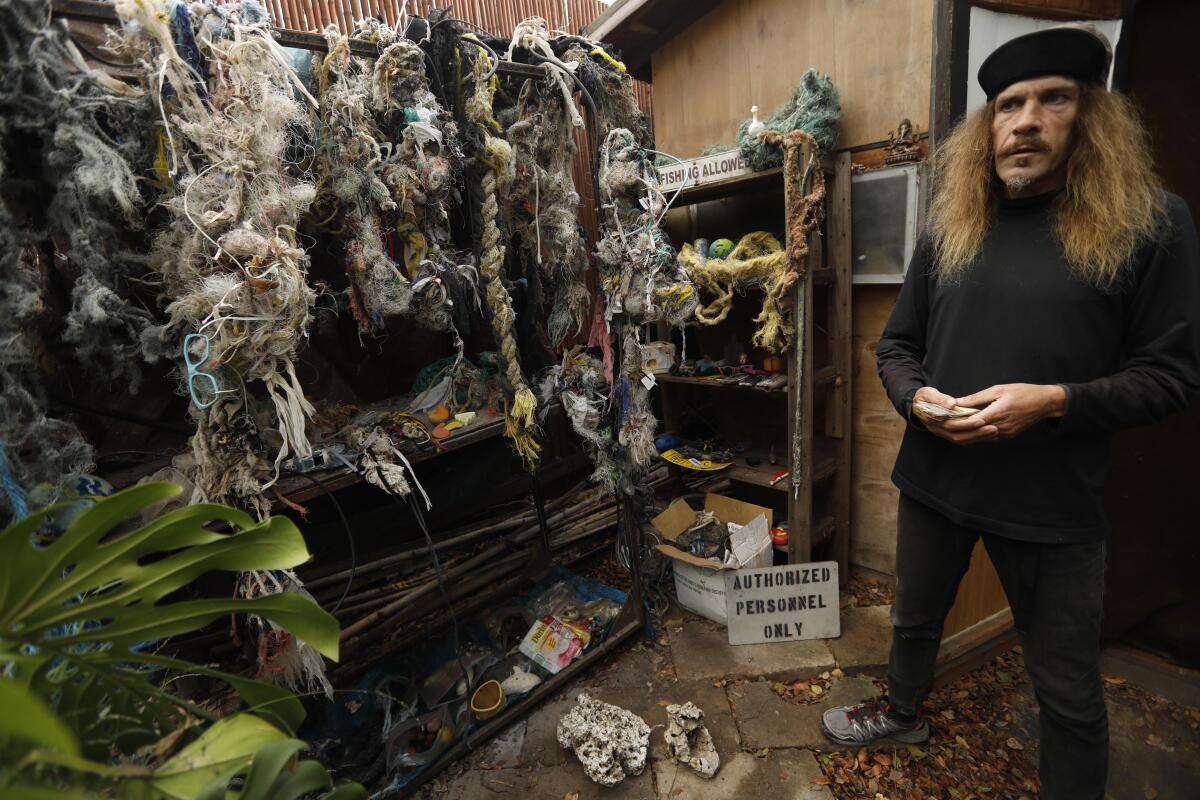
At the backyard hut he calls home, Peters keeps a museum of sunglasses, swim masks, plastic toys, car parts and hairy tangles of netting and marine rope he has pulled from the water and the shore. Barnacled rubber balls are stored together, as are cellphone cases and chip wrappers. He has fished up a drone, an electronic weather device, an underwater cam, plastic six-pack slings, decades old chip wrappers, bottles and cans.
His neighbor in Venice, Conny Lederer, was the one who suggested I tag along with Peters. She calls him “the sweetest man” and an “environmental hero,” and she came out with us the day after the Nov. 20 rains. Peters, who has no car, and bikes everywhere, went to the spot where Ballona Creek passes under Lincoln Boulevard, just south of Culver.
A yellow trash boom had been stretched across the creek, creating a slimy sea of debris. A county cleanup crew used a tractor to scoop dripping buckets of garbage out of the water, and a member of the crew told me they’d already loaded 20 yards onto trucks for disposal.
Peters was hoping the boom had done the bulk of the job, but as he cycled several hundred yards toward the sea, he saw that tons of trash had gotten through. It was low tide, exposing a wide band of junk that clung to the creek bed.
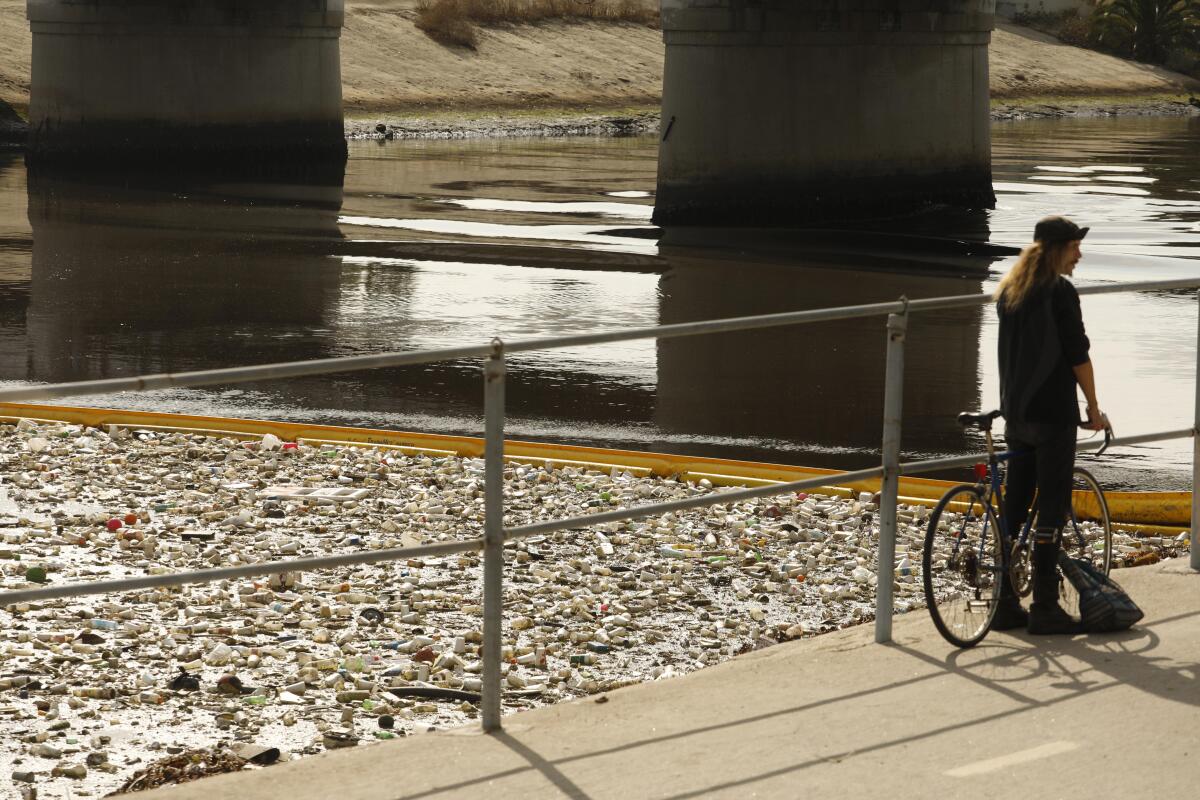
A crew of 10 could have attacked the mess for a solid eight hours without making much of a dent, but Peters began going at it one item at a time, and he had a plan.
“I usually go for the plastics first,” he said, because that’s the stuff that can kill marine life.
He pulled a plastic strapping band out of the water, saying he’d found birds strangled by the stuff.
Two women stopped on the trail above the creek and watched for a moment, horrified at the scene and surprised Peters wasn’t wearing gloves.
“There could be syringes in there,” one woman said. “And condoms,” said the other.
Peters told me he had tried gloves but didn’t like the way gunk seeped into them.
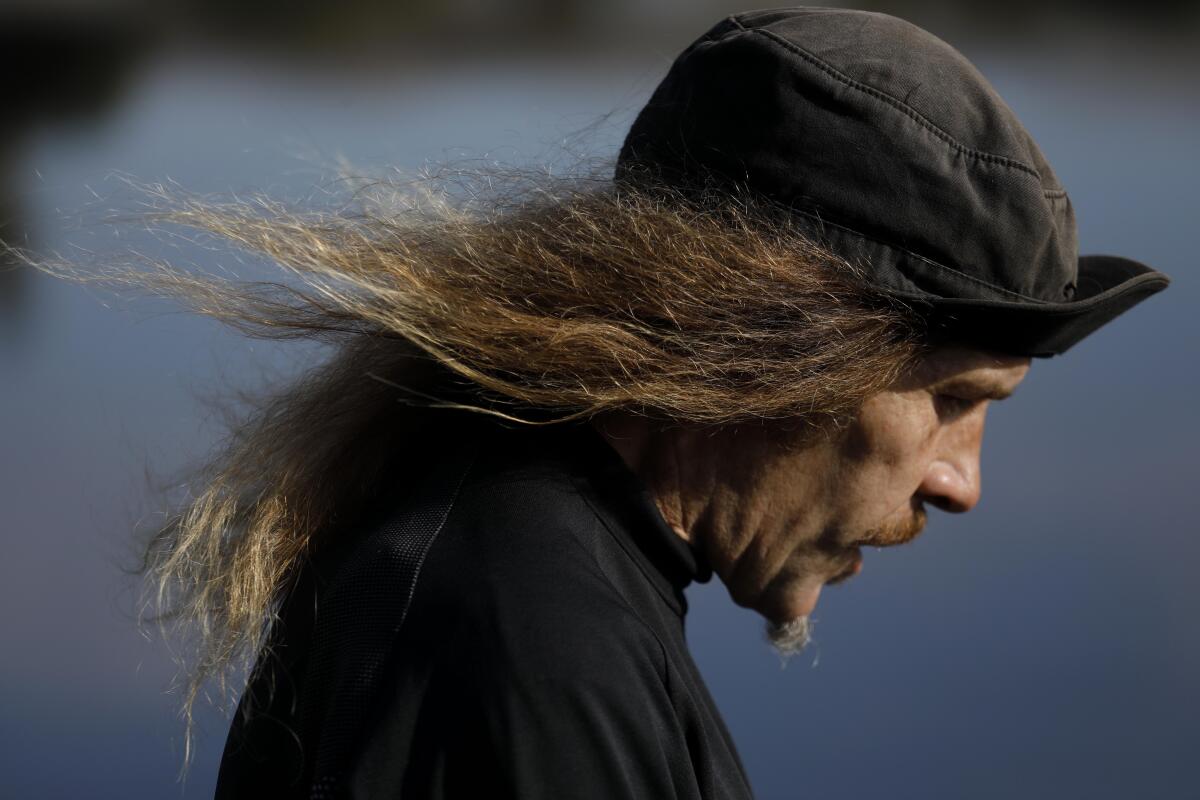
“The whole thing has made me kind of bonkers over the years,” Peters said of the never-ending job he has assigned himself, and when he lived in an RV, he used to hit the bottle a bit too much, trying to calm himself.
When he started doing this regularly, he said, he often confronted people on the beach or anywhere else where he saw them littering. But that led to nasty exchanges that were demoralizing, if not dangerous.
“I was surrounded by some guys who’d left their beer bottles on the beach, and it was hair-raising,” he said.
Peters decided the only way to not go crazy was to offer occasional comments on the danger to marine life, but to otherwise lead by example.
Peters lived in New York in his rock ‘n’ roll days, then moved to Hawaii. He came to Los Angeles a dozen years ago and couldn’t believe the amount of trash he saw on the beaches. In 2012, he walked through fields of Styrofoam and “became obsessed.”
He said he got laid off from his last job for a marijuana dispensary, but has saved just enough money to get him through the next few months, and then he plans to move back to Hawaii and pick up trash on the beaches there.
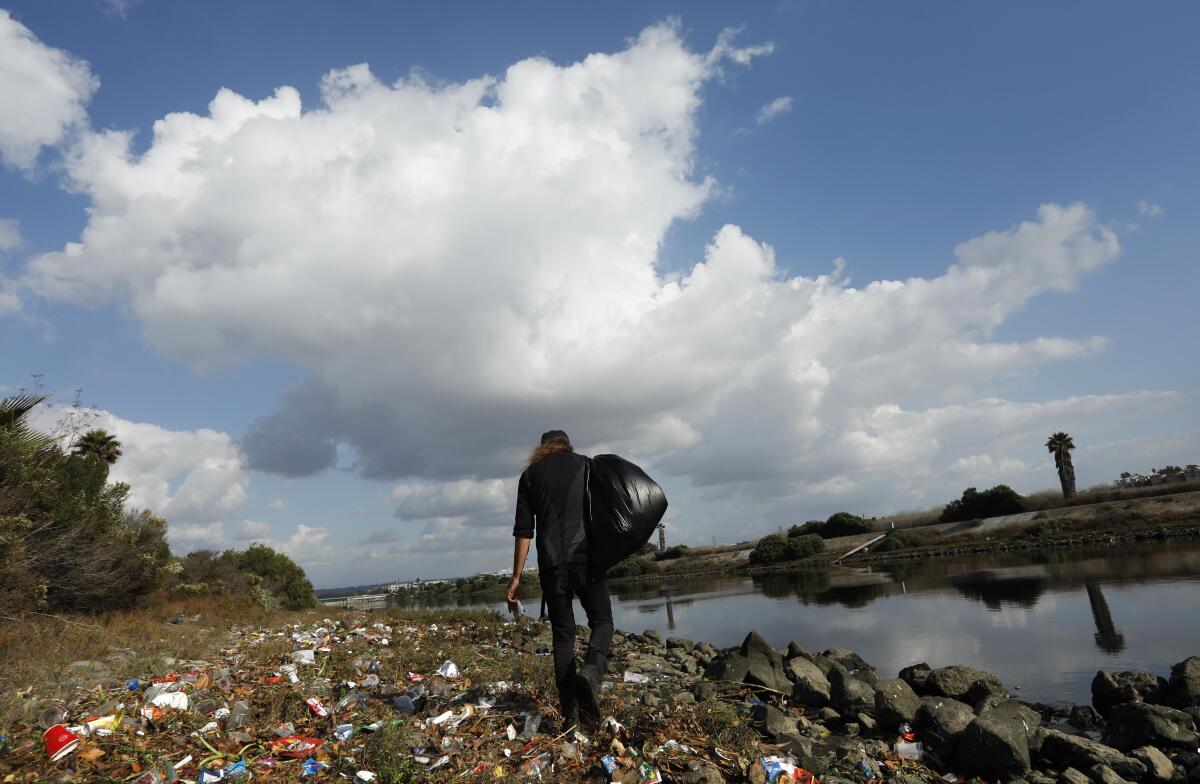
I grabbed an empty bag and began filling it with plastics. Big Gulp cups were everywhere. Soda bottles. Oil and detergent containers. Plastic lids. Straws. It took me less than 15 minutes to fill a large bag, and it was like removing a grain of sand from the beach.
Peters said he can carry two or three full bags at a time on his bike and take them to county cleanup crews or to nearby dumpsters.
Then he’s back for more.
As the tide began coming back in, the water took back some of the trash that had been deposited on the shore. But the way Peters sees it, any item retrieved before it hits the ocean might save the life of an ocean critter.
“I’m just trying to do something good here,” he said.
More to Read
Sign up for Essential California
The most important California stories and recommendations in your inbox every morning.
You may occasionally receive promotional content from the Los Angeles Times.










